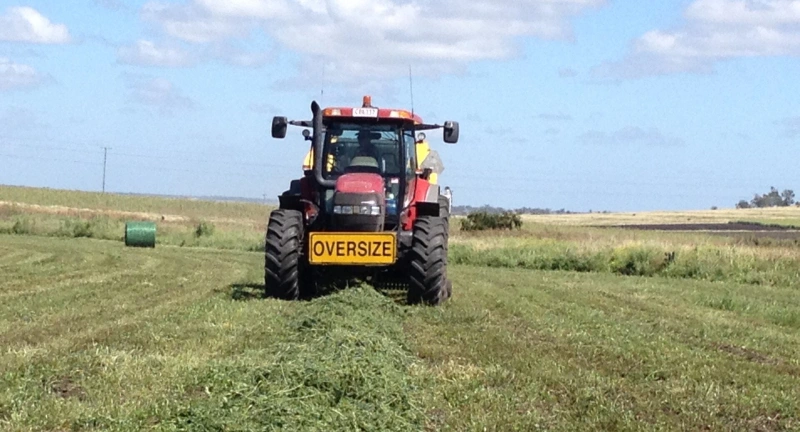
Selling second-hand farm machinery online can be simple, and surprisingly profitable, when you prepare well. Demand often rises before major seasons like sowing and harvest, so timing, presentation, and the right platform make all the difference.
List gear 4–8 weeks before the local use-window (seeding, hay, harvest). That’s when buyers are most motivated and pay a premium for ready-to-work machines.
Winter-crop sowing runs autumn into early winter; hay work pushes into spring; and grain harvest kicks off earliest nationally from October–November in many districts. So, list seeders/tillage in late summer to early autumn (Feb-Apr), hay gear in mid-winter (Jul-Aug), and headers/chaser bins/augers in late winter to early spring (Jul-Sep) to catch pre-harvest buyers.
NSW sowing for winter crops typically sits April-June, hay cutting/baling runs spring (Sep-Oct), and harvest tracks north to south from Oct-Dec. List seeders/tillage in Feb-Apr, hay gear in Jul-Aug, and headers/harvest support in Aug–Sep so buyers can organise inspections, finance and freight in time.
Vic growers generally sow April-June, cut hay Oct-Nov, and harvest Nov-Dec. Your best windows: seeders/tillage in Feb-Apr, hay gear in Aug-Sep, and headers/harvest support in Sep-Oct. For forage/hay quality, timing your cut matters, use crop stage rather than the calendar and call that out in your listing to reassure buyers.
In SA, sowing lands Apr-June, hay work leans Sep-Oct, and harvest typically Oct-Dec. Aim to list seeders/tillage Feb-Apr, hay gear Jul-Aug, and harvest kit Aug-Sep. These pre-season windows give interstate buyers enough time for transport and any cleaning.
WA’s opening rains drive May-June sowing; oaten hay for export is cut spring (Sep-Oct); harvest is largely Nov-Dec (into Jan in some zones). List seeders/tillage in Mar-Apr, hay gear in Jul-Aug, and headers/harvest support in Sep-Oct. If your listing targets export-grade hay producers, call out cleaning standards and cut timing knowledge, export hay has tighter specs.
Cooler conditions push windows later: sowing May-July, hay Nov-Jan, and harvest Dec-Feb. List seeders/tillage in Mar-May, hay gear in Sep-Oct, and headers/harvest support in Oct-Nov to meet demand before works ramp up.
There are plenty of places to sell farm machinery online in Australia, including LocalAg, Farm Tender, AuctionsPlus, Machines4U, TractorHouse, Gumtree, and several active Facebook groups.
Each has a slightly different audience and fee structure. For high-value or specialist machinery, choose a marketplace that understands the agricultural sector and provides genuine support.
At Feed Central’s LocalAg, we’ve built a marketplace designed by farmers, for farmers.
Here’s what makes us different:
LocalAg combines proven technology with real industry knowledge, giving you a trusted platform to sell quickly, safely, and at a fair price.
A clean, well-documented machine attracts confident buyers.
Tip: Photograph on a clear day, use even lighting, and keep the background uncluttered.
Focus your listing on what farmers want to know:
Describe the machine in plain, factual terms. Avoid exaggeration, buyers appreciate straight talk and accuracy.
Do your research before setting a price:
Overpricing can slow your sale, while realistic pricing often brings faster, higher-quality offers.
When selling across states, biosecurity and transport costs matter:
Clarifying these details upfront avoids disputes later.
Confidence, courtesy, and speed all help build buyer trust.
Once you’ve agreed on a price:
How long does it take to sell?
Well-priced, well-presented machinery can sell within two to four weeks.
What if I’m selling interstate?
Factor in quarantine cleaning, permits, and freight costs early. Make these clear in your listing.
How can I avoid scams?
Stick to verified buyers, keep all messages within the marketplace, and use CheckVault for payments.
Do I need to include warranty or service records?
Yes. Providing service records adds credibility and can speed up your sale.
When you list your machinery on LocalAg, you’re choosing a platform built for Australian agriculture, one that protects your payments, supports regional communities, and connects you with serious buyers. List your machinery today and see why farmers nationwide trust LocalAg to get a fair deal, fast.
Search our marketplace